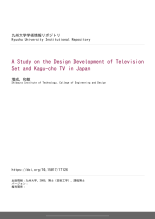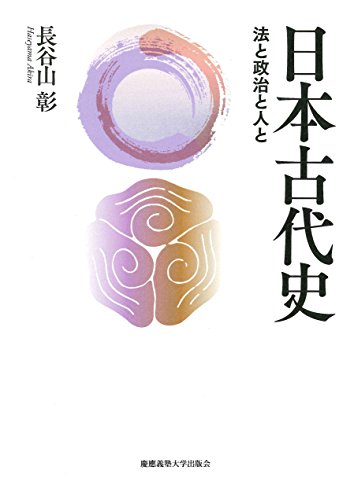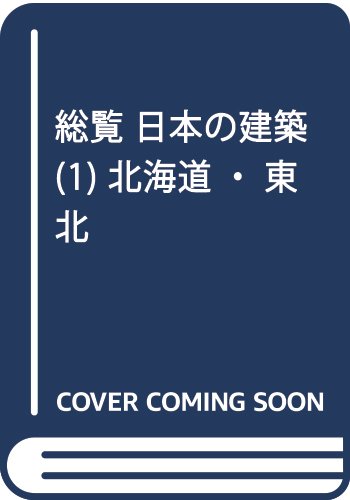1 0 0 0 IR 日本におけるテレビ受像機のデザイン変遷と家具調テレビの成立に関する研究
This paper summarizes the transition of TV design in Japan and the development of Kagu-cho style TV. When Japan imported the technology for TV from Western countries, they also imported designs. The consolet type with 4 detachable rounded legs, developed in the Western countries, became mainstream in Japan in the late 1950s. The Japanese console type in the 1960s had also 4 rounded legs but its design was not yet unique to Japan. In this period, the replacement demand constituted a large share of the demand for monochrome TV sets. Then, Kagu-cho TV was developed as a trigger for purchase. Behind the development of Kagu-cho TV in the mid-1960s was the modern Danish design. It was clear that Japanese Kagu-cho TV was not a follower of the American design considering the process of its birth. In newspaper ads at the time, the word “Kagu-cho” had been used before “Saga” was launched, and various manufacturers commercialized designs which expressed “Kagu-cho” style. The word “Kagu-cho” in the ads was one of the factors that created “Kagu-cho” design. At first, “Kagu-cho” didn’t necessarily mean Japanese style but later, “Saga”, whose name and design was Japanese style, was introduced with a big advertising campaign. The campaign created an image of Japanese style for Kagu-cho TV and made “Saga” its representative. The features of “Saga” were a projecting top board, speaker grille, the legs harmonized with the body and natural wooden texture. For the “Saga” series, various designs that differentiated from the 1st generation design were introduced. The design of “Saga” was influenced by “Asuka”. The reason why “Asuka” has an image of Japanese style is because the advertising campaign created an image in association with “Azekura-zukuri”, Japanese traditional structure. Considering the creation process of Kagu-cho TV in relation to design application, Sanyo Electric first applied patents for the design features that characterize “Saga”. Sanyo launched “Nihon”, a Kagu-cho style TV. This meant that behind the birth of Kagu-cho TV was the design trend at that period. To summarize, even though a design is created by an individual designer, the era and society is apparent in the background. Regarding TV sets, only the designs that were suitable for Japanese lifestyle survived among those brought in from the Western countries. Then Japanese manufacturers came to take into account design for product development and gradually Japanese unique design became more important. As a result, Kagu-cho TV emerged.
1 0 0 0 青春群像さようなら六本松 : 一九二一福高-九大二〇〇九
- 著者
- 九州大学さようなら六本松誌編集委員会編
- 出版者
- 花書院
- 巻号頁・発行日
- 2009
1 0 0 0 OA 「学問の自由」,「大学の自治」と大学内部の法関係 (1)
- 著者
- 片山 等
- 出版者
- 國士舘大學比較法制研究所
- 雑誌
- 比較法制研究 (ISSN:03858030)
- 巻号頁・発行日
- vol.27, 2004
1 0 0 0 OA 花粉喘息の特徴
- 著者
- 信太 隆夫 降矢 和夫 水野 勝之 我妻 義則 松山 隆治 宮田 亮
- 出版者
- 一般社団法人 日本アレルギー学会
- 雑誌
- アレルギー (ISSN:00214884)
- 巻号頁・発行日
- vol.19, no.10, pp.739-751,800-80, 1970-10-30 (Released:2017-02-10)
現代日本で最も普遍的な花粉症の原因花粉はスギ花粉で, 次いでヨモギ, イネ科, ブタクサなどが重要である.スギの抗原としての独立性は高く, イネ科, ヨモギ, ブタクサあるいはシロザなどが時に相互に類似性を示すことと対照的である.いわゆる花粉症と花粉喘息を比較観察し次の結果を得た.1)花粉喘息の発症年令は花粉症より若く, かつ2峰性の分布を示す.2)花粉喘息は花粉症を繰返して生ずるより初めから喘息として発症することが多い.3)花粉喘息のAch感受性は明らかに高い.4)花粉症の発作季節は原因花粉飛散季節と一致するが, 喘息ではしばしば春秋型をとり, 必ずしも花粉季節と一致しない.5)花粉症も花粉喘息も主因外花粉に対する皮内反応はほゞ同様の傾向を示すが, 花粉以外のHDや真菌類に対しては花粉喘息は明らかに高い陽性率を示す.6)花粉喘息のPK価は皮内反応の閾値との関係において花粉症のそれより低い.
1 0 0 0 OA 渋沢栄一における欧州滞在の影響 : パリ万博(1867年)と洋行から学び実践したこと
- 著者
- 関水 信和
- 出版者
- 千葉商科大学国府台学会
- 雑誌
- 千葉商大論叢 (ISSN:03854558)
- 巻号頁・発行日
- vol.56, no.1, pp.61-134, 2018-07-31
1 0 0 0 関東大震災と土砂災害
1 0 0 0 日本古代史 : 法と政治と人と
1 0 0 0 OA 113)統合失調症者の病識と服薬態度との関連
- 著者
- 阿部 裕美 森 千鶴
- 出版者
- 一般社団法人 日本看護研究学会
- 雑誌
- 日本看護研究学会雑誌 (ISSN:21883599)
- 巻号頁・発行日
- vol.31, no.3, pp.3_173, 2008-07-20 (Released:2019-11-16)
- 参考文献数
- 4
1 0 0 0 OA 長期入院統合失調症患者の退院支援に関する熟練看護師の看護実践のプロセス
- 著者
- 香川 里美 名越 民江 粟納 由記子 松岡 美奈子 南 妙子
- 出版者
- 公益社団法人 日本看護科学学会
- 雑誌
- 日本看護科学会誌 (ISSN:02875330)
- 巻号頁・発行日
- vol.33, no.1, pp.1_61-1_70, 2013-03-20 (Released:2013-04-09)
- 参考文献数
- 20
目的:本研究では,熟練看護師が長期入院統合失調症患者に対し,退院を意識して患者に関わり始めた時期から退院支援が終了するまでの,看護実践のプロセスを明らかにすることを目的とした.方法:研究協力者13名を対象に半構成的面接を行い,質的帰納的分析を行った.結果:本研究で見出されたカテゴリーは,《患者を捉え直すことで見えてきた退院可能性》【心の奥底にある退院への希望を引き出す】【退院支援に消極的な主治医との意思統一】【退院に賛同できない家族の心情と背景を理解する】【プライマリーナースが主体となるネットワークの構築】【安心を提供するプライマリーナースの役割遂行】【1対1の関わりから自信を持たせる】の7カテゴリーであった.《患者を捉え直すことで見えてきた退院可能性》は他のすべてのカテゴリーに影響を与える中心的現象と考えられ,本研究のコアカテゴリーに位置づけられた.結論:長期入院統合失調症患者の退院支援に関する看護実践のプロセスには,継続的に患者を捉え直しながら可能性を広げる柔軟な臨床判断と,失いつつある希望を引き出し,わずかな変化にも即応できる看護介入が必要である.
1 0 0 0 OA 乙骨耐軒の『瀛奎律髄刊誤條記』について
- 著者
- 中村 孝子
- 出版者
- 東京学芸大学国語国文学会
- 雑誌
- 学芸国語国文学 (ISSN:03879135)
- 巻号頁・発行日
- vol.48, pp.144-149, 2018 (Released:2018-10-11)
1 0 0 0 文化紀要
- 著者
- 弘前大学教養部 [編]
- 出版者
- 弘前大学教養部
- 巻号頁・発行日
- 1966
1 0 0 0 OA 精神科病棟入院患者の現状と理学療法の効果
- 著者
- 石橋 雄介 西田 宗幹 山田 和政
- 出版者
- 理学療法科学学会
- 雑誌
- 理学療法科学 (ISSN:13411667)
- 巻号頁・発行日
- vol.32, no.4, pp.509-513, 2017 (Released:2017-08-20)
- 参考文献数
- 11
- 被引用文献数
- 1
〔目的〕身体合併症を呈した精神科病棟入院患者を対象に,生活機能と精神機能に対する理学療法(PT)の有効性を検証した.〔対象と方法〕身体合併症に対してPTを実施した精神科病棟入院患者を対象に,理学療法開始時と終了時のBarthel IndexスコアおよびGlobal Assessment of Functioningスコアをカルテより収集した.〔結果〕両スコアともPT終了時で有意に高得点であった.〔結語〕身体合併症を呈した精神科入院患者に対するPTは,生活機能のみならず精神機能の改善も期待できることが示唆された.
1 0 0 0 OA 慢性期統合失調症患者に対する音楽療法介入の研究(博士論文紹介)
- 著者
- 浅野 雅子
- 出版者
- 一般社団法人 日本音響学会
- 雑誌
- 日本音響学会誌 (ISSN:03694232)
- 巻号頁・発行日
- vol.70, no.6, pp.352, 2014-06-01 (Released:2017-06-02)
1 0 0 0 OA リビヤ・地中海上死闘四十時間
- 出版者
- イタリヤ大使館情報官室
- 巻号頁・発行日
- 1942
1 0 0 0 火山体におけるガリー侵食の発達過程に関する研究
- 著者
- Nurdin Muhammad
- 出版者
- 九州大学
- 巻号頁・発行日
- 1994
博士論文








